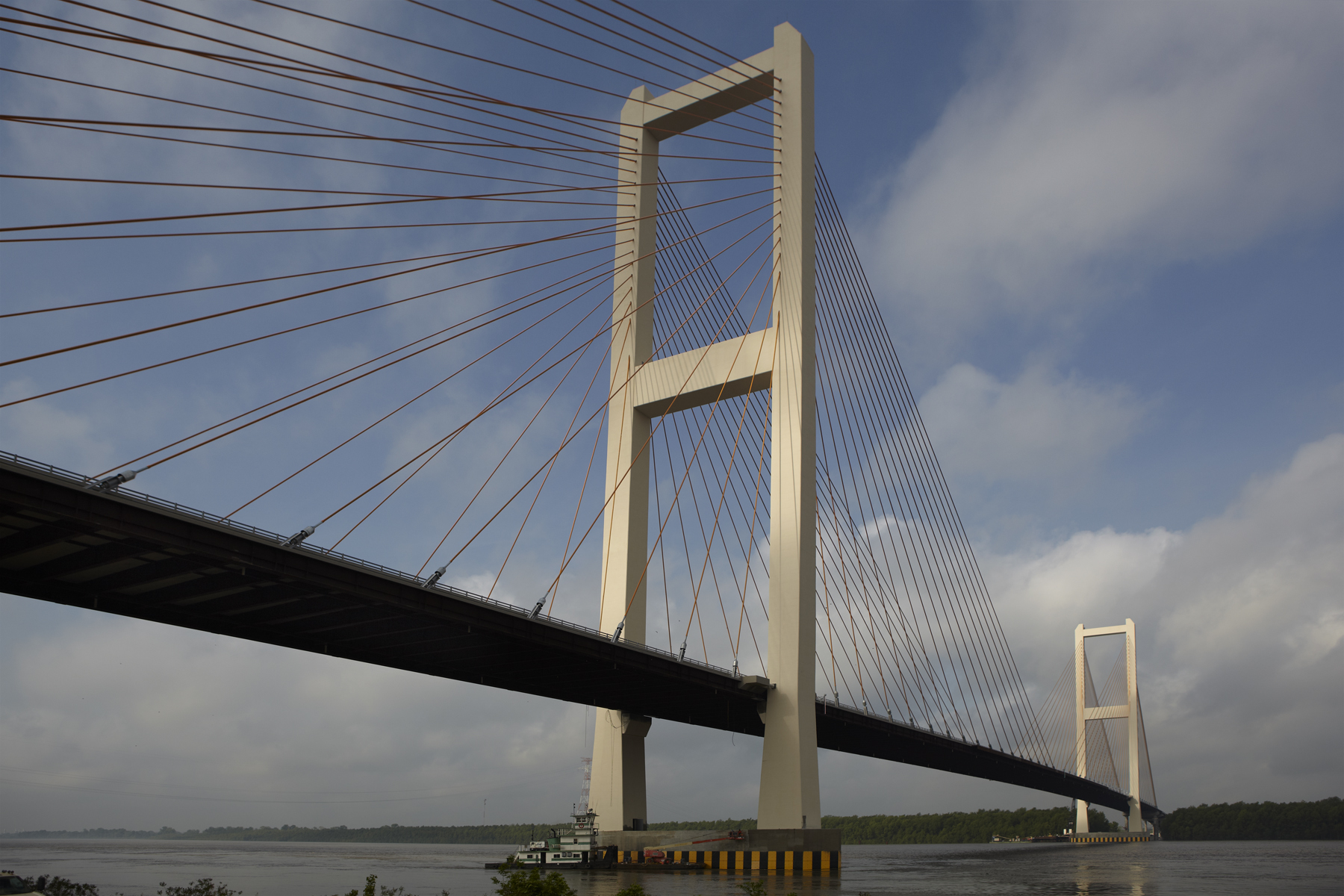Project News
Southeast Success

Flatiron has been working in the Southeast since the 1990s—but recent growth in North and South Carolina has firmly established Flatiron’s place as a builder and partner of choice in the region.
 Cooper River. Audubon. Yadkin. Flatiron’s Southeast Division is responsible for some of Flatiron’s most iconic projects. In the last two decades, Flatiron has successfully completed more than $1.7 billion in work in the region.
Cooper River. Audubon. Yadkin. Flatiron’s Southeast Division is responsible for some of Flatiron’s most iconic projects. In the last two decades, Flatiron has successfully completed more than $1.7 billion in work in the region.
Flatiron first expanded into the Southeast with major projects in the Carolinas. Projects like the Carolina Bays Parkway, a $254 million design-build project in Myrtle Beach, South Carolina, and the Cooper River Bridge, a $541 million design-build joint venture in Charleston, South Carolina. In Florida, Flatiron built the Interstate 10 bridges over Escambia Bay, John’s Pass Bridge and State Route 60 at Tampa International Airport between 2002 and 2010.
But it’s in the last two years that Flatiron has truly hit its stride in the region, adding staff and establishing Flatiron as a local builder and partner of choice. In the last year alone, Flatiron has won over $600 million worth of new work in the Carolinas.
The Southeast Division is led by Ted Kirk, who first joined Flatiron in 2007. He started the week the Interstate 35 W bridge collapsed in Minneapolis, and he was immediately tasked with starting up the project with a team of managers from across Flatiron.
“I was happy to be part of the job,” said Ted. “It really gave me a feel for what Flatiron is all about—accelerated work and people moving from all over the country to come together to build something. It was a fabulous project.”
Ted has tried to bring that Flatiron culture to the team in the Southeast—and he’s not the only one.
“We’ve got a great group of mobile superintendents and engineers who travel all over the country,” said Ted. “They do a great job of planning every detail of the work so we don’t miss a beat. We don’t have to go back and do re-work.”
 The team in the Southeast is a mix of these Flatiron veterans from other parts of North America, local talent, and a strong contingent of capable newcomers.
The team in the Southeast is a mix of these Flatiron veterans from other parts of North America, local talent, and a strong contingent of capable newcomers.
“There aren’t big learning curves in terms of what people’s abilities are,” said Ted. ”You’re able to hit the ground running, because you have common approaches to how you perform the work.”
“We’re getting people from all different kinds of companies,” added Adrian Price, an engineer who started as an Intern with Flatiron in 2006, and joined full-time in 2009. “It’s allowing us to get new ideas, and the newcomers are good at working as a team and sharing workloads.”
The strong team has helped build Flatiron’s reputation with owners. “We stand out because we deliver projects early and because of the quality of the projects we deliver,” said Ted. “Our strengths make us more competitive in this market.”
And the market is a strong one. Owners in North and South Carolina are estimated to have about a billion dollars of heavy and highway work coming out over the next twelve months.
“We’re starting to see an influx of contractors from other states,” said Chris Lamm, project manager on the Interstate 85/Interstate 385 design-build project. “But so far we’ve definitely been able to stay ahead of them and continue to prove ourselves to be competitive in this aggressive market.”
Flatiron has pursued both bid-build and design-build work in the area. It’s a strategy that Ted thinks is critical for success.
“I think what makes us better at design build is building good bid-build work. To keep people employed, maintain momentum, and build relationships with owners, you really need to be successful in bid-build and design-build work,” said Ted. “In the past we’d target mainly major projects. We would develop a staff and develop a reputation, and then we’d move on when the project was done. But over the last year and a half we’ve kind of stuck to our guns here. We’ve continued to bid all kinds of work consistently, and really dialed into our strengths.”
“We went back to basics, and what we are good at,” agreed Adrian. “We have good people, good communication, and good relationships. I think that’s allowed us to be successful.”
Despite a strong forecast in the Carolinas, where all of Flatiron’s current work is, the Southeast team is also chasing work elsewhere in the region, including potential projects in Kentucky, Virginia, Tennessee and Alabama.
“Flatiron has a great reputation down here as being a competent, productive contractor,” said Chris. “I think our future here in the Southeast is wide open.”
